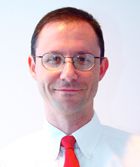Even the best health care professional may make mistakes, and some lapses can lead to illness, injury or death. However, a growing body of research suggests that it is not just the patients who are affected in such cases.
Caregivers usually suffer emotional and physical harm in the wake of their medical errors. This is a surprisingly common problem that can reduce their effectiveness, compromise patient safety and lead to professional attrition.
Two local Maryland hospitals are starting a program to help them. Greater Baltimore Medical Center recently introduced Cary for Caregivers, an initiative designed by the Maryland Patient Safety Center and John Hopkins Hospital’s Armstrong Institute for Patient Safety and Quality. The University of Maryland Medical Center will launch a similar program next month.
The facility chooses and assembles a team of about two dozen peer responders, volunteers trained to lend an ear to caregivers who are dealing with the aftermath of an error they’ve made or with some other clinically related stress.
The programs address a problem referred to as the “second-victim” phenomenon. The first victims of a medical error are patients and their families. However, the second set of victims, the health-care professional involved in the incident are also in need of help.
The opportunity to explore the incident in safety is important for constructive change.
Stress does not necessarily have to come from an error. Even trained professionals can suffer when a patient they know passes away or receives an upsetting diagnosis. According to professionals, in order to care about someone else, doctors have to leave a piece of themselves vulnerable. They are affected by what they see and sometimes they need help with it.
Medical errors are more widespread than the public may realize. A 2000 study by the Institute of Medicine found that as many as 100,000 people die in United States health care facilities because of preventable mistakes every year.
Surveys have also suggested that between 10% and 50% of health care workers identify that they have been a second victim of an adverse patient event.
The field is still so new that it is hard to quantify results; both hospitals would be tracking the programs’ progress.

